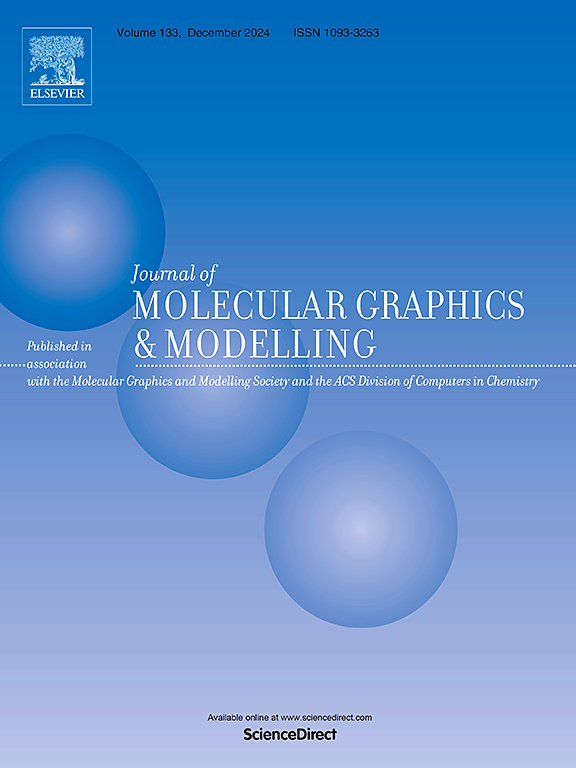Molecular property prediction based on graph contrastive learning with partial feature masking
IF 3
4区 生物学
Q2 BIOCHEMICAL RESEARCH METHODS
引用次数: 0
Abstract
Molecular representation learning facilitates multiple downstream tasks such as molecular property prediction (MPP) and drug design. Recent studies have shown great promise in applying self-supervised learning (SSL) to cope with the data scarcity in MPP. Contrastive learning (CL) is a typical SSL method used to learn prior knowledge so that the trained model has better generalization performance on various downstream tasks. One important issue of CL is how to generate enhanced samples that preserve the molecular core semantics for each training sample, which may significantly impact the earnings of the CL strategy. To address this issue, we propose the partial Feature Masking-based molecular Graph Contrastive Learning model (FMGCL). FMGCL constructs the masked molecular graph by masking partial features of each atom and bond in the featured molecular graph. Since the masking molecular graphs preserve the chemical structure of the molecules, they do not violate the chemical semantics of molecules, which is beneficial for capturing valuable prior knowledge of molecules during pre-training. Then, FMGCL fine-tunes the well-trained encoder on the featured molecular graph for downstream tasks. Moreover, we propose using the relative distance between samples within a batch to enhance the performance in regression tasks. Experiments on the 12 benchmark datasets from MoleculeNet and ChEMBL showed the superiority of FMGCL.

基于部分特征掩蔽的图对比学习的分子性质预测
分子表征学习促进了多种下游任务,如分子性质预测(MPP)和药物设计。近年来的研究表明,应用自监督学习(SSL)来解决MPP中数据稀缺的问题具有很大的前景。对比学习(CL)是一种典型的SSL方法,用于学习先验知识,使训练后的模型在各种下游任务上具有更好的泛化性能。CL的一个重要问题是如何为每个训练样本生成保留分子核心语义的增强样本,这可能会显著影响CL策略的收益。为了解决这个问题,我们提出了基于部分特征掩码的分子图对比学习模型(FMGCL)。FMGCL通过屏蔽特征分子图中每个原子和键的部分特征来构建屏蔽分子图。由于掩蔽分子图保留了分子的化学结构,因此不会违背分子的化学语义,这有利于在预训练过程中捕获有价值的分子先验知识。然后,FMGCL在特征分子图上微调训练良好的编码器,用于下游任务。此外,我们建议使用批内样本之间的相对距离来提高回归任务的性能。在来自MoleculeNet和ChEMBL的12个基准数据集上的实验表明,FMGCL的优越性。
本文章由计算机程序翻译,如有差异,请以英文原文为准。
求助全文
约1分钟内获得全文
求助全文
来源期刊

Journal of molecular graphics & modelling
生物-计算机:跨学科应用
CiteScore
5.50
自引率
6.90%
发文量
216
审稿时长
35 days
期刊介绍:
The Journal of Molecular Graphics and Modelling is devoted to the publication of papers on the uses of computers in theoretical investigations of molecular structure, function, interaction, and design. The scope of the journal includes all aspects of molecular modeling and computational chemistry, including, for instance, the study of molecular shape and properties, molecular simulations, protein and polymer engineering, drug design, materials design, structure-activity and structure-property relationships, database mining, and compound library design.
As a primary research journal, JMGM seeks to bring new knowledge to the attention of our readers. As such, submissions to the journal need to not only report results, but must draw conclusions and explore implications of the work presented. Authors are strongly encouraged to bear this in mind when preparing manuscripts. Routine applications of standard modelling approaches, providing only very limited new scientific insight, will not meet our criteria for publication. Reproducibility of reported calculations is an important issue. Wherever possible, we urge authors to enhance their papers with Supplementary Data, for example, in QSAR studies machine-readable versions of molecular datasets or in the development of new force-field parameters versions of the topology and force field parameter files. Routine applications of existing methods that do not lead to genuinely new insight will not be considered.
 求助内容:
求助内容: 应助结果提醒方式:
应助结果提醒方式:


